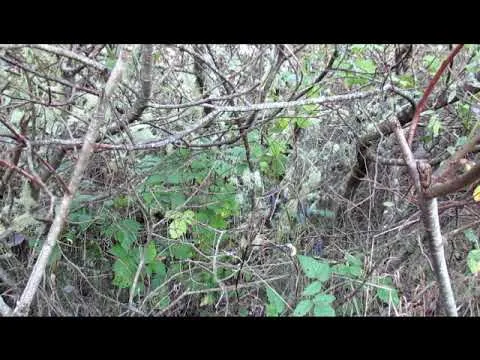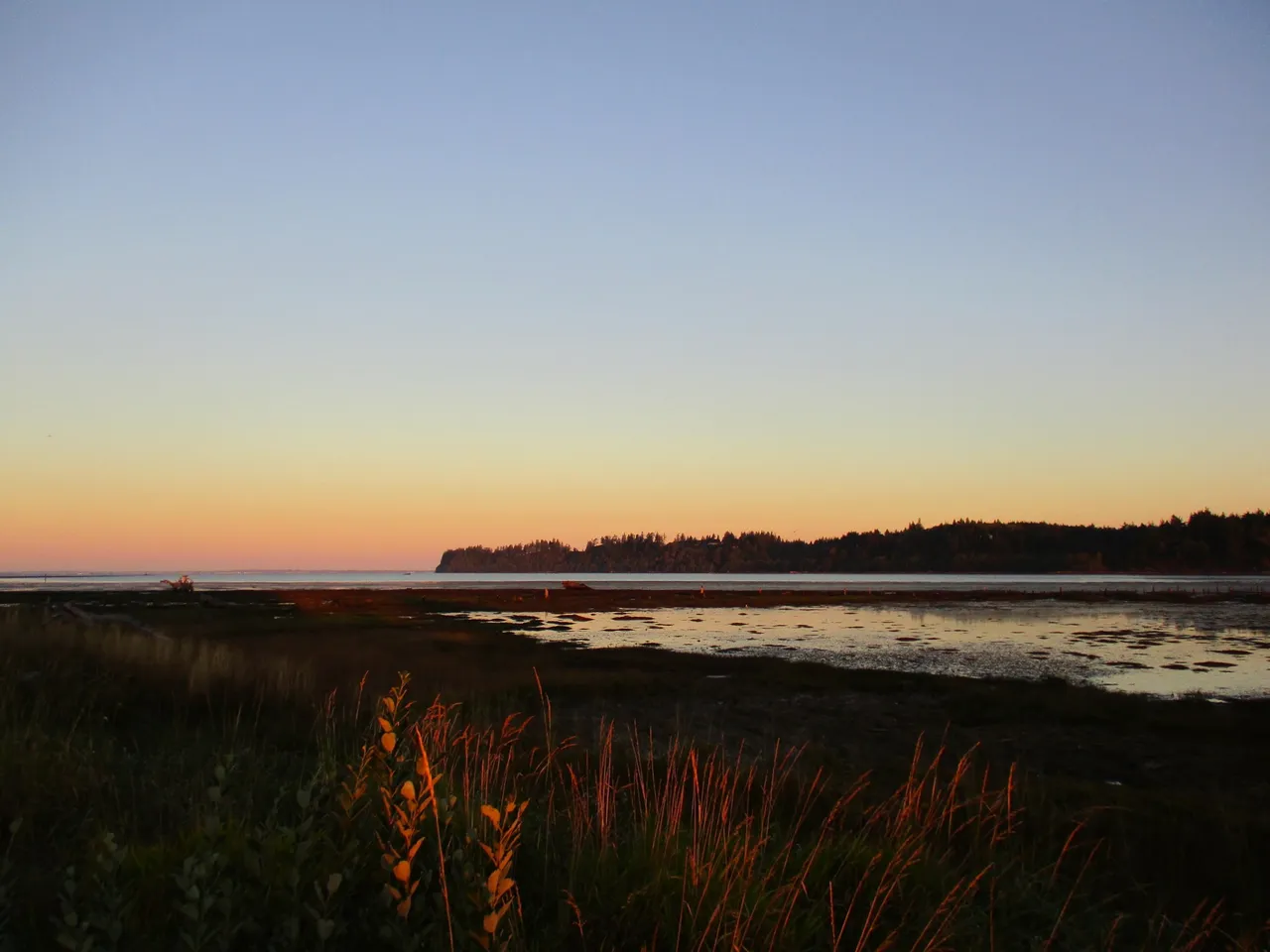
Friday felt like the last gasp of summer for Grays Harbor. It was one of the nicest days we had all summer, sunny and in the seventies, and on Saturday the rain and clouds rolled in.
I walked out to the Grays Harbor National Wildlife Refuge to the west of Hoquiam in the dark. The sun was just breaking over the horizon when I reached the Sandpiper Trail, a 0.7-mile boardwalk perched in and along the woods beside the mudflats (Ashley 2018).
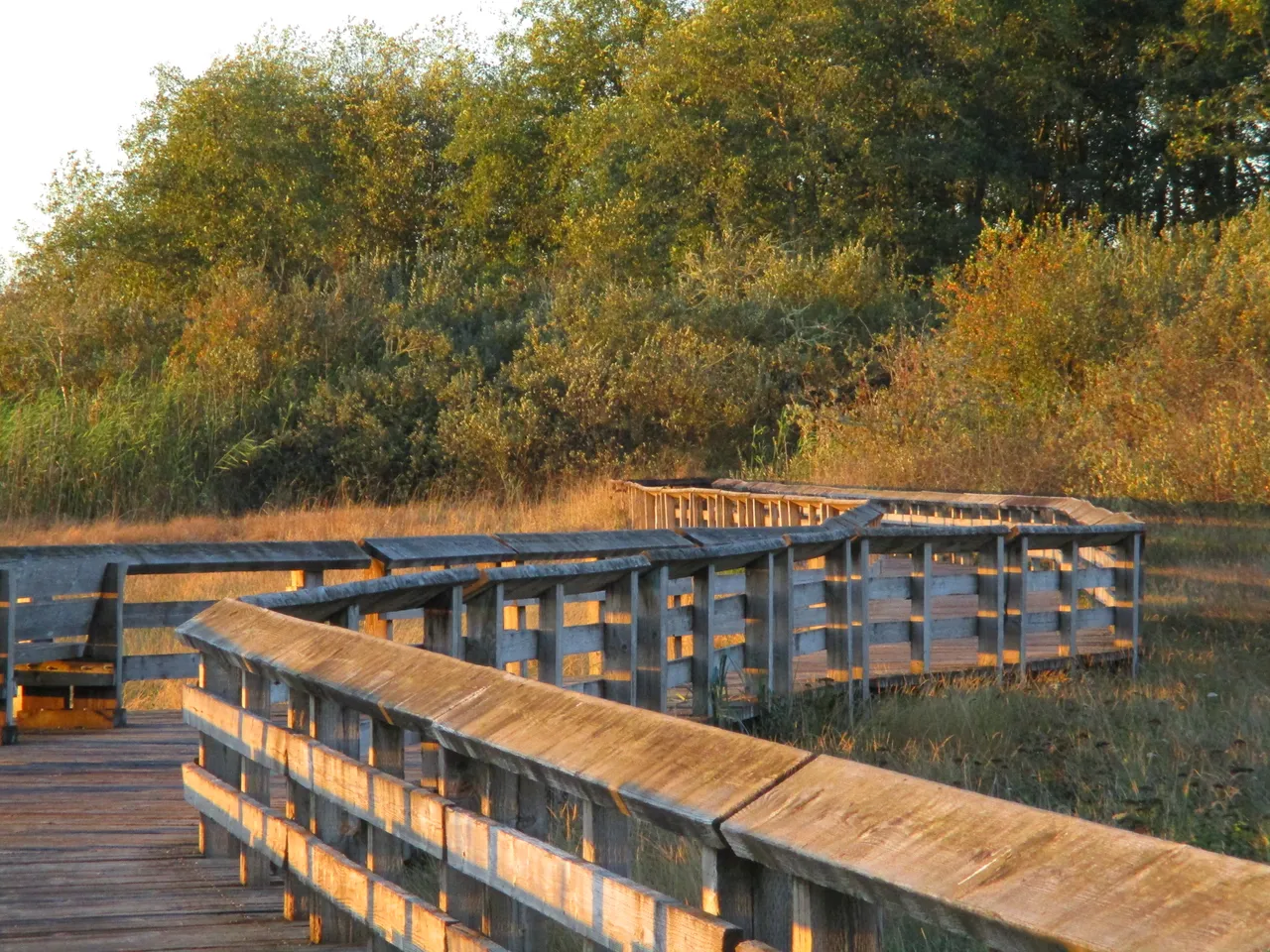
Incredibly, this was my first trip into the wildlife refuge in the four years I’ve lived in Hoquiam! I went out there a couple times, but only made it as far as the information kiosk at the start of the trail next to Bowerman Airport. From there all you can see is a blacktop road running past a bunch of hangars; I had no idea what lay at the end of the road.
I finally decided to explore further because I was looking for a new site for the Morning Pic. I checked out the wildlife refuge with Google Earth, which clearly shows the boardwalk in its satellite photo, so I knew where to go – and I could see that I’d been missing out!

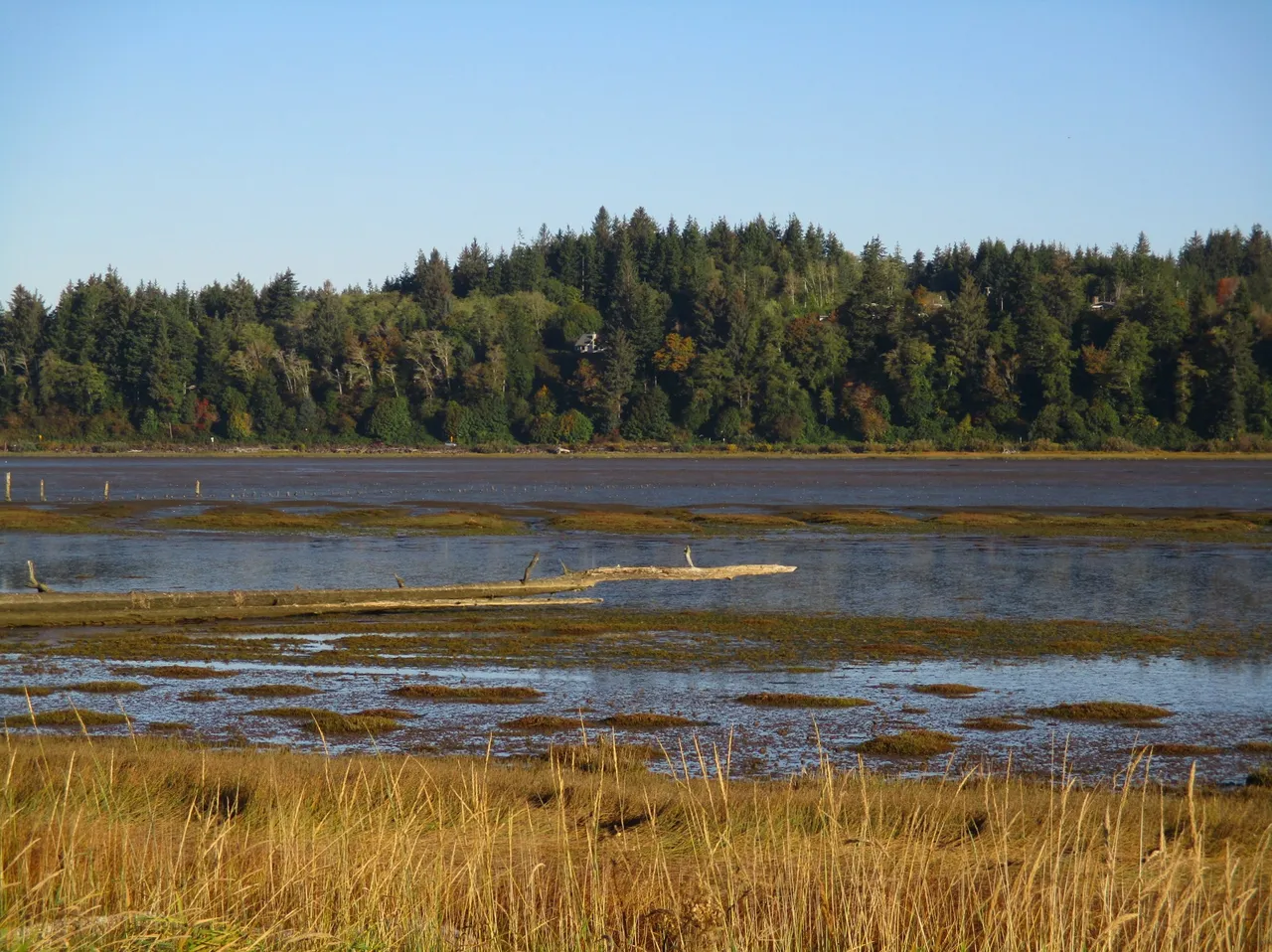
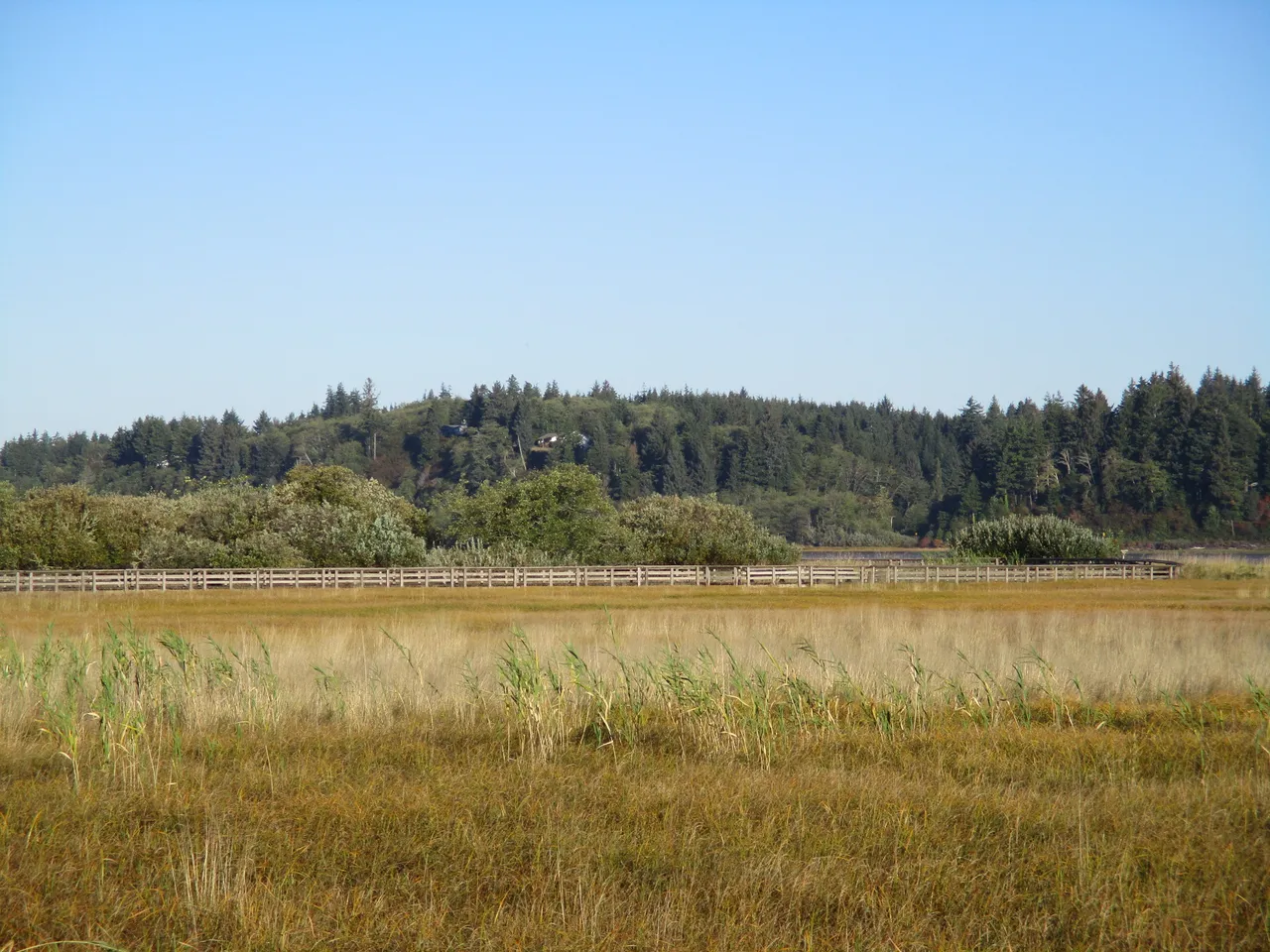
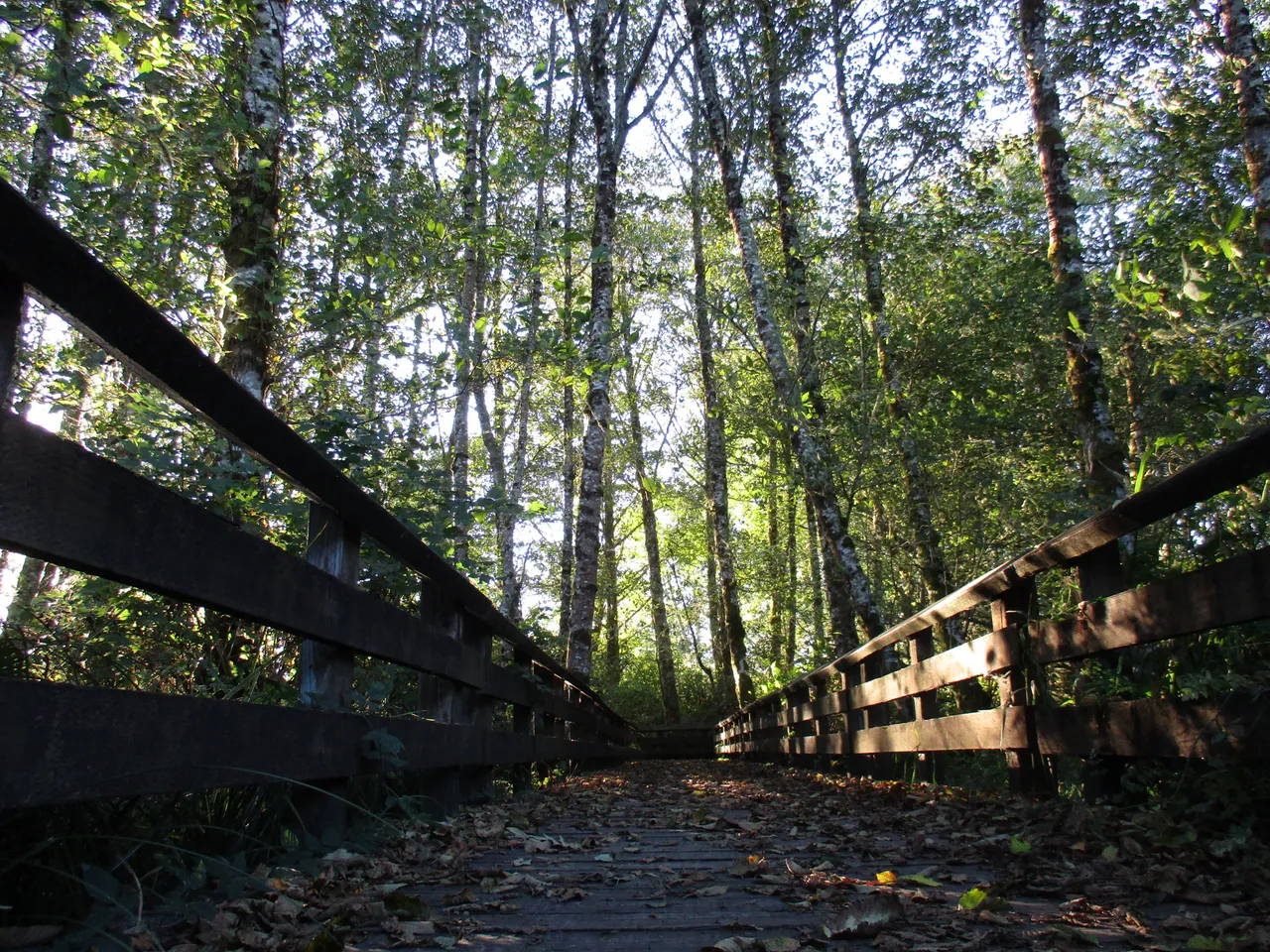
The Refuge
According to a brochure by the U.S. Fish & Wildlife Service (2017, 4-5), the Grays Harbor NWR “encompasses about 1500 acres of intertidal mudflats, salt marsh, and uplands” that amount to about two percent of the Grays Harbor estuary’s 94 square miles. The whole of Grays Harbor estuary “provide(s) critical habitat for a variety of wildlife and fish including up to a million (emphasis mine) shorebirds during spring migration.”
Grays Harbor is one of six major estuary systems on the Pacific Coast. It has been formally recognized as important by the American Bird Conservancy and the Western Hemisphere Shorebird Reserve Network.
The Grays Harbor NWR “hosts up to 50 percent of the migrating shorebirds in spring,” because its mudflats, which hold the invertebrates the birds eat, are the last to be flooded in Grays Harbor when the tide comes in, and the first to be uncovered when it goes out (F&W brochure, 4-5).
Each spring, Hoquiam hosts the annual Grays Harbor Shorebird Festival, when birders from all over the world visit the NWR. And no wonder – it is the place to see shorebirds in late April and early May.
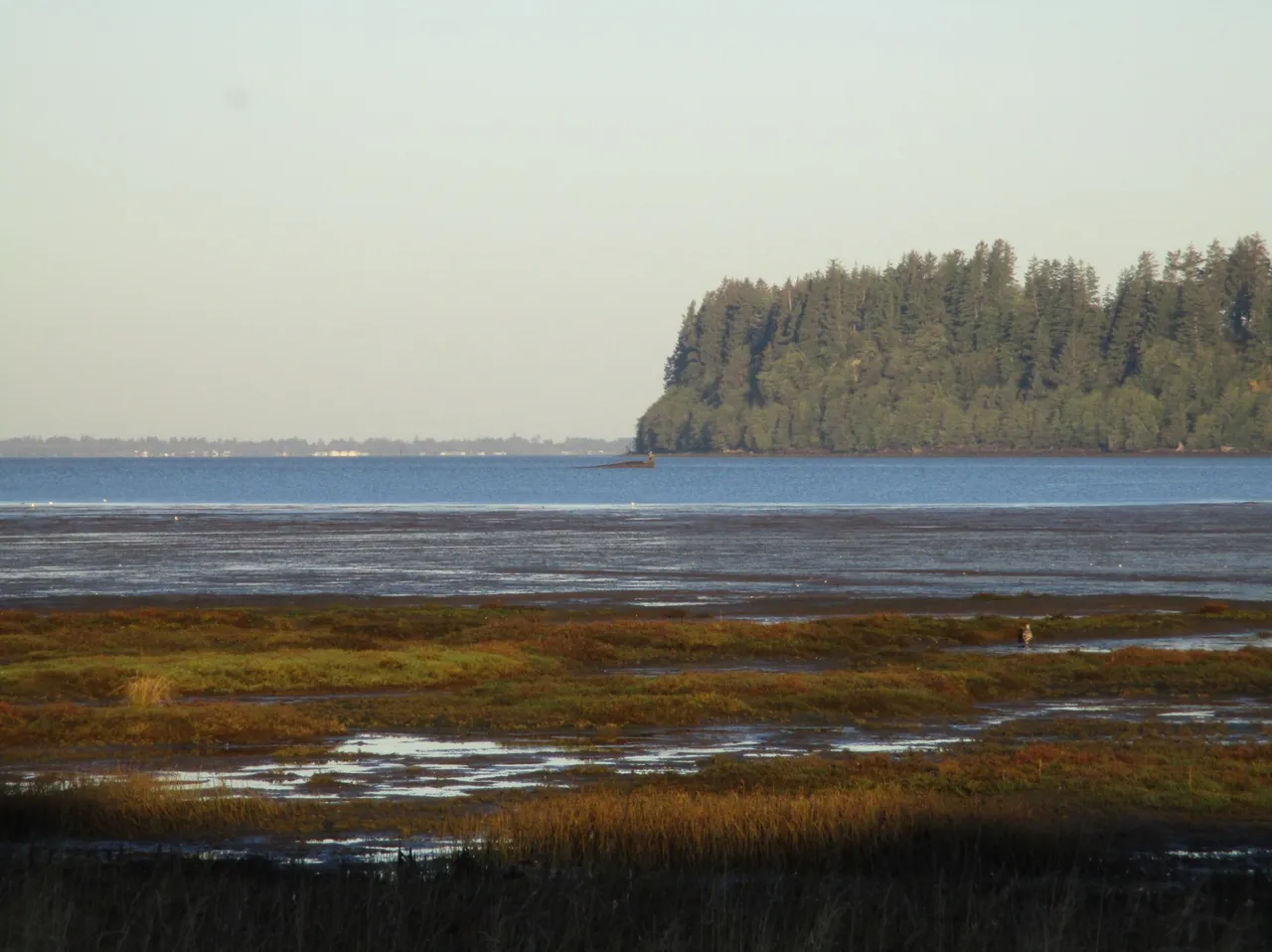
The Fleet
There weren’t any shorebirds to be seen when I took my ramble out there for the Morning Pic, maybe because the mudflats were not entirely exposed. But the Fish & Wildlife Service says that the fall migration is more dispersed than the spring, lasting from July through September, so there are fewer to see, and I went out there at the tail end of the season.
I did hear plenty of birds in the woods and thickets, and saw a few, but they were small and fleet. It’ll be quite a feat to catch any of them on film – a feat I’m looking forward to attempting again in the near future.
There was one flock of maybe six brown and black birds, likely Chestnut-backed Chickadees, that swarmed in the brush behind me as I was shooting across the mudflats; a taste of their call is on the video below. I set the camera on the railing to record them, and one of them lit on the railing only three or four feet away. When I pulled the camera back to see if I could photograph them, they took off for some other bush.
There are several birds on the soundtrack; the chickadees have the quieter, high-pitched chitter starting with three rapid notes. It’s probably easiest to distinguish them by first listening to their call on All About Birds (see references below) and then watching my video.
A Surprise Appearance
The heron that has made several appearances in the Morning Pic surprised me in one of Friday’s shots. I had no idea it was there until I looked at the photo on my computer at home.
I suppose I don’t know for sure that this is the same heron, or that there is only one hanging around Hoquiam. The three places it has shown up – the Hoquiam River in town, “Dog Marsh,” and now the NWR – are miles apart. On the other hand, I don’t have the advantage of wings, yet I’ve been at all those places on different mornings, so maybe this is the same bird.
And maybe it’s wondering if there is more than one of me!


References and more information
Ashley, Eric. Accessed September 30, 2018. Hiking Project. https://www.hikingproject.com/trail/7021262/sandpiper-trail. The U.S. Fish & Wildlife Service says it is a two-mile roundtrip from the information kiosk next to the airport, along the blacktop road, to the end of the boardwalk (F&W brochure, 19). Ashely’s measurement seems about right for the boardwalk itself.
Cornell Lab of Ornithology. Accessed October 2, 2018. Chestnut-backed Chickadee. All About Birds. https://www.allaboutbirds.org/guide/Chestnut-backed_Chickadee/overview.
Grays Harbor Shorebird and Nature Festival. Accessed September 30, 2018. https://www.shorebirdfestival.com.
U.S. Fish & Wildlife Service. Accessed September 30, 2018. Grays Harbor National Wildlife Refuge. https://fws.gov/refuge/Grays_Harbor/.
U.S. Fish & Wildlife Service. February 2017. Grays Harbor National Wildlife Refuge. Brochure. N.p.

